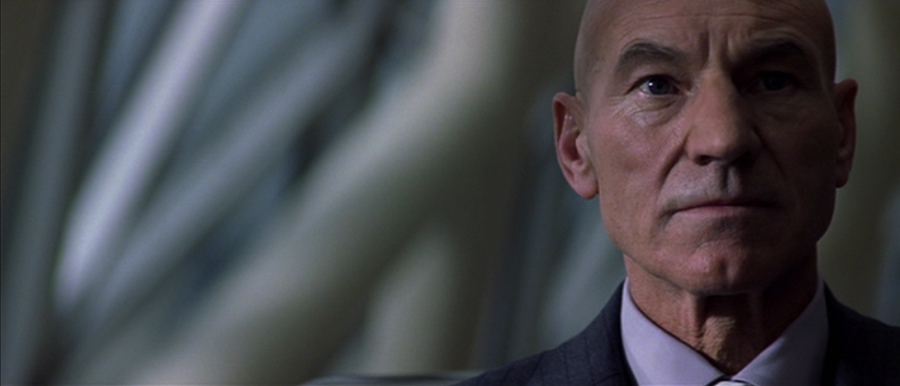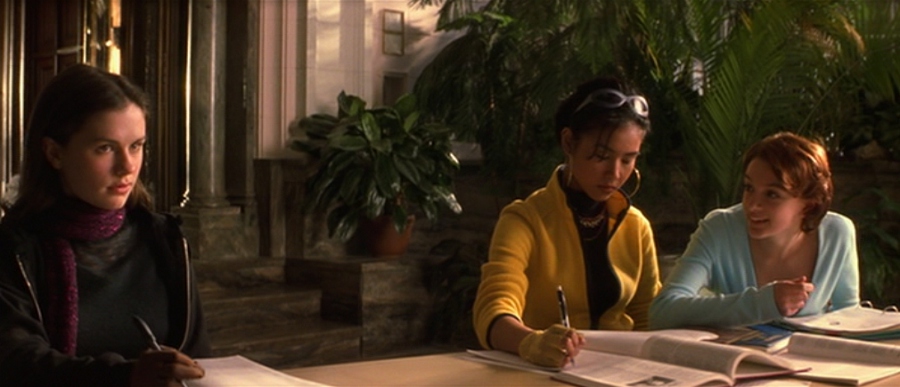To start off the new year, let’s start a new series: the X-Men.
The Uncanny X-Men were introduced by Stan Lee and Jack Kirby in 1963. They had two basic gimmicks to set them apart from other heroes: number one, they were teenagers in a superhero school, and number two, they were mutants (or as Stan Lee put it in his book Son of Origins, “people with something x-tra”). They didn’t get their powers from suits of armor or magic sticks or accidental exposure to cosmic rays or gamma rays or radioactive spiders. Like Lady Gaga, they were just born that way.
They were not a huge hit at first. But in 1975, writer Len Wein teamed with artist Dave Cockrum to introduce a new team of X-Men in a giant size special, whose adventures continued in their revived monthly book written by Chris Claremont. And that was when the book started to turn into the overwhelming, industry-altering juggernaut it later became.
Still, the thing that was risky about X-Men when Brian Singer decided to adapt it into a movie for 20th Century Fox was simply that general audiences weren’t likely to know who the X-Men were. They were not cultural icons in the way that Superman or Batman or even Spider-Man were. So turning these guys into a summer tentpole action picture, especially when super-heroes might be considered box-office poison after the twin flops Batman and Robin and Mystery Men, was a pretty ballsy move.
The film opens with a very subtle blink-and-you’ll- miss-it moment, as the ‘x’ at the end of “20th Century Fox” fades out just a bit slower than everything else. And that subtlety is one of the things that helped make X-Men a success.
After a brief opening title sequence explaining what mutants are, we are taken to a Nazi concentration camp in Poland. The guards perform the routine move of separating a young teen from his parents. Unfortunately for them, this teen is anything but routine.
As he reaches for his mother, he drags four grown men with him, until he is knocked out by a buttstock to the head. But he leaves behind one seriously mangled metal gate.
Flash forward 60 years or so to find teenaged Marie (Anna Paquin) flirting with her boyfriend as she describes going on an epic roadtrip up to Alaska after she graduates high school. But the flirting turns to terror when she kisses him, and suddenly…
It’s an icky effect that still works pretty well, although the CGI effects really show their age throughout the movie. Her boyfriend collapses with a seizure, and as Marie screams that it wasn’t her fault, we head off to Washington D.C. and a Senate hearing in progress. Dr. Jean Grey (Famke Janssen), an expert on mutants, is speaking against a proposed “Mutant Registration Act” that is supported by the grandstanding blowhard Senator Kelly (Bruce Davison).
In the comics, Jean Grey was a founding member of the X-Men under the name Marvel Girl, while Senator Robert Kelly sponsored the Mutant Control Act and was a central figure in the “Days of Future Past” storyline (which started Claremont’s obsession with convoluted time-travel storylines and drove me away from the series). And that’s one of the things that Singer does well in this movie, packing it with in-jokes and references to the comics without making it incomprehensible to an audience that doesn’t know all the references.
On the other hand, this is one of those rare moments when the movie loses all pretense at subtlety, having Senator Kelly wave a list of “known mutants” in a facsimile of Sen. Joseph McCarthy’s infamous “known Communists” speech. And thus we are to gather that Senator Kelly is a very bad man, cold-hearted and mean-spirited, despite the fact that his concerns are not entirely misplaced.
Meanwhile, as the hearing continues, we see a bald man in wheelchair leave in pursuit of a mysterious grey-haired man. These two men will become the leaders of their respective sides in the coming conflict. Professor Charles Xavier, played by Patrick Stewart…
And let me take a moment to voice a personal pet peeve. I understand that the reason everybody in the movie pronounces Xavier “Ex-avier” instead of the proper way, with the ‘x’ sounded as a ‘z,’ is to facilitate the shortening of his name to the appropriately superheroic Professor X. But I grind my teeth every time I hear it. Every single time.
And Eric Lensherr, soon to be revealed as Magneto, played by Ian McKellen.
And here in these last few images, we see some of the things the film does really well. The images are all carefully framed and beautifully lit. And the performances, especially McKellen’s, are very good.
Eric hints darkly at his plans to react to the mutant hysteria and warns Charles to stay out of his way. Meanwhile in Canada, Marie has decided to take her trip to the Great White North a little early. She ends up in this rowdy dive in the middle of a shantytown, with a big fighting cage in the middle of it. And the current king of the cage is a fierce-looking dude called the Wolverine, played with nicely understated intensity by Hugh Jackman.
One of the locals steps in to fight him, and though he seems to have the upper hand at first, when the Wolverine deigns to fight back, he dismantles his opponent easily.
Later, a broke and starving Marie is eyeing both the tip jar and Wolverine with equal trepidation, when the guy Wolverine fought demands his money back. When he doesn’t get it, he makes the mistake of bringing a knife to a, um, superpower fight.
This moment is an homage to a bit in the John Byrne run of the comic in which Wolverine uses his two outside claws to bracket the guy’s head, then asks if he wants to “go for three.” The moment is interrupted when the bartender pulls out a shotgun, which doesn’t do him much good. Wolverine slashes it in two, then leaves the bar. Marie goes after him.
Wolverine drives away, then stops the truck. He goes back to the trailer holding his motorcycle, sniffing, and finds Marie hidden under a tarp. After a bit of bluster, he lets her into his cab. They begin a tentative friendship, where she at first calls herself Rogue, and he reveals that his real name is Logan.
Their moment of bonding is cut short when a tree slams into the front of the truck, sending Logan flying out through the windshield. He recovers quickly, his cuts closing before Rogue’s eyes, but then he is pounded into unconsciousness by a huge fanged dude who roars like a tiger.
Rogue, meanwhile, in a bit of intricately constructed suspense, is trapped in the burning camper with an about-to-explode propane tank behind her and this monster dude in front of her. Until these two show up, accompanied by a mysterious sudden blizzard.
The bad guy flees, and Logan and Marie are saved before the camper explodes. The savage dude shows up in some sort of underground headquarters, where he tells Eric that he failed to retrieve his target (in a nice detail, Magneto has a Newton’s Cradle on his desk that consists of five hovering balls with no means of support other than his own powers). Eric clenches Wolverine’s dogtags in his hand as he asks where the target is.
Wolverine is meanwhile unconscious on a table in some advanced medical facility. We see Dr. Jean Grey examine him and use telekinesis to grab a vial.
Once again, this is carefully calibrated to introduce her powers to an audience unfamiliar with the X-Men while not insulting the fans who know her with a lot of unnecessary exposition. Logan comes to as the needle pierces his arm, throws Jean aside and runs out of the room into a bizarre high-tech corridor where he finds leather jumpsuits in display cases and is pursued by whispering voices.
He ducks into an elevator and emerges into a lushly appointed mansion with teenagers running through the halls. More whispering voices manipulate him into an office where he encounters Professor X teaching a class to some teenagers. The Professor tells him that Marie is safe and introduces the people who saved him–Ororo Munro, also known as Storm, and Scott Summers, Cyclops. Wolverine is not impressed.
We then enter the painful exposition portion of the movie, where Xavier tells Logan about Eric/Magneto, about the history of the school and its purpose, to teach mutants to control their abilities so that they can live in harmony with mankind.
During this bit, we get a brief tour of the grounds (with a look at the X-Men’s stealth plane) and we see Rogue in class with her fellow students, just about all of whom are (in another bit of throwaway brilliance) characters from the comics, whether they are named or not. For instance, here we see Rogue with Jubilee and Kitty Pryde.
Kitty does get a moment to demonstrate her powers in Xavier’s office (she is also referenced, though not by name, in Kelly’s Senate floor speech), but Jubilee is a complete mystery. Unless you read the comics and recognized her yellow outfit, you wouldn’t have any idea who she was or what she could do.
Rogue also gets a flirty introduction to earnest young Bobby Drake, who makes her a rose out of ice. Awww…
As Xavier finishes telling Logan all the stuff the audience needs to know about the backstory, he offers Logan a deal: stay long enough for Xavier to figure out why Magneto tried to have him kidnapped, and in exchange, Xavier will try to penetrate Logan’s amnesia. He has no idea of anything that happened more than 15 years ago.
And that’s where we’ll leave it until next week. I was going to try to do this in two weeks, but I have too many screen caps, so I’m splitting it into three (this also has the advantage of giving me more time to gather the rest of the X-movies I don’t have yet).
See you next time.




















One of the things I liked was that this movie showed the characters using their powers in little offhanded ways that helped make you believe they really lived with those abilities every day. Iceman chilling a drink, Magneto’s little Newton’s Cradle and using his power to open doors – it all helped sell the concept when not every super-moment was hyped up with music and focus i.e. “we spent money on this, you’d better watch it!”